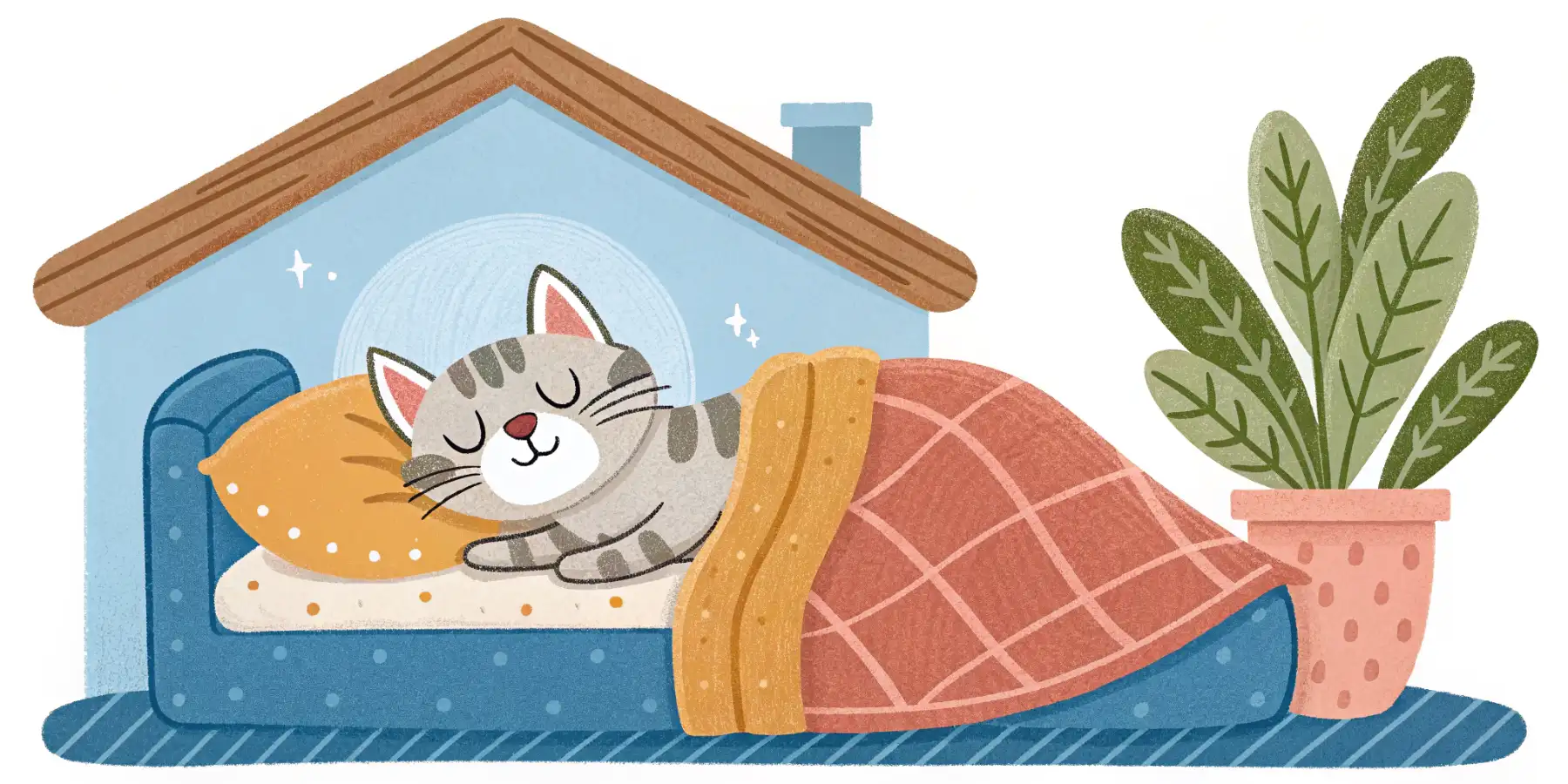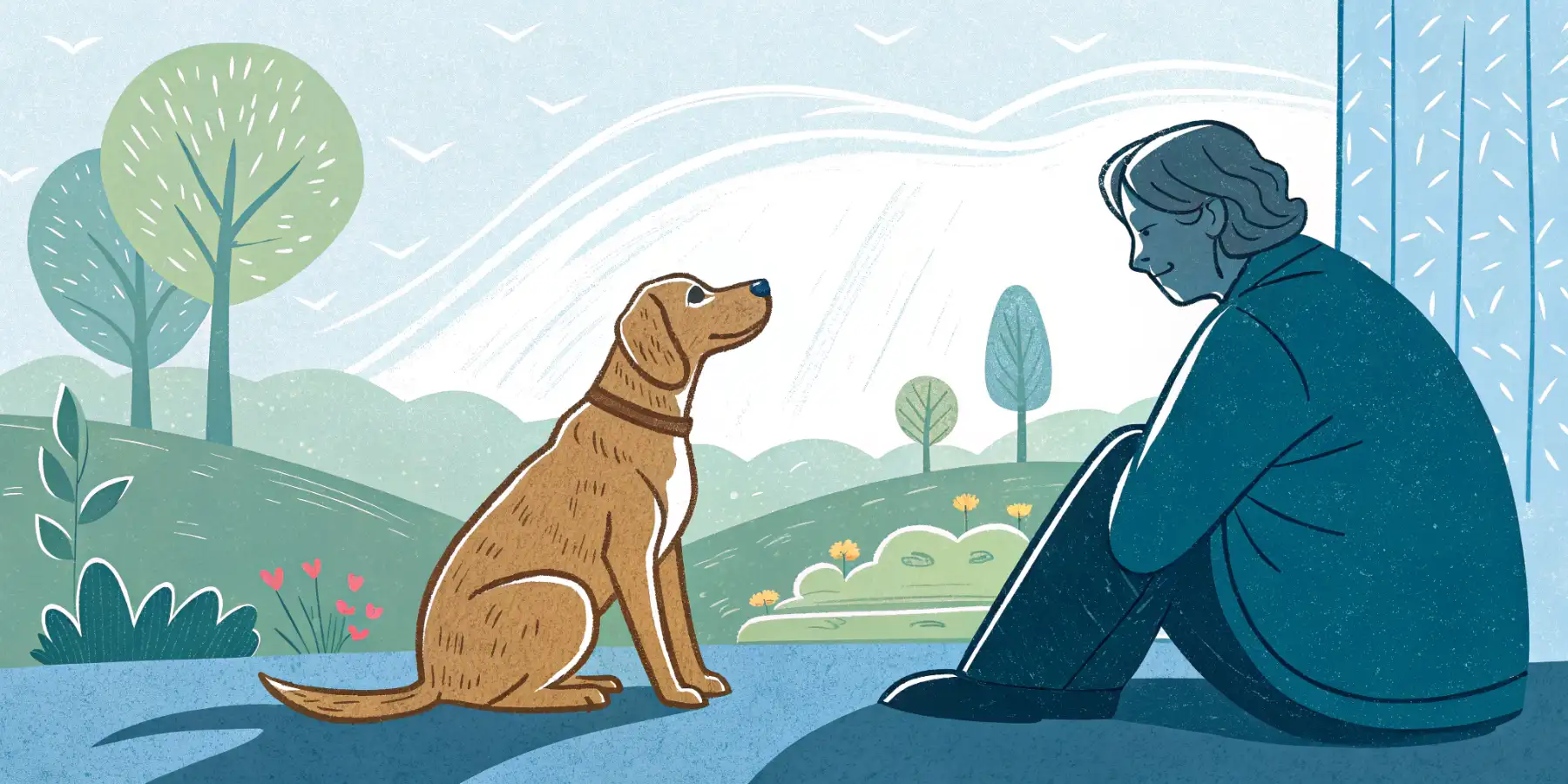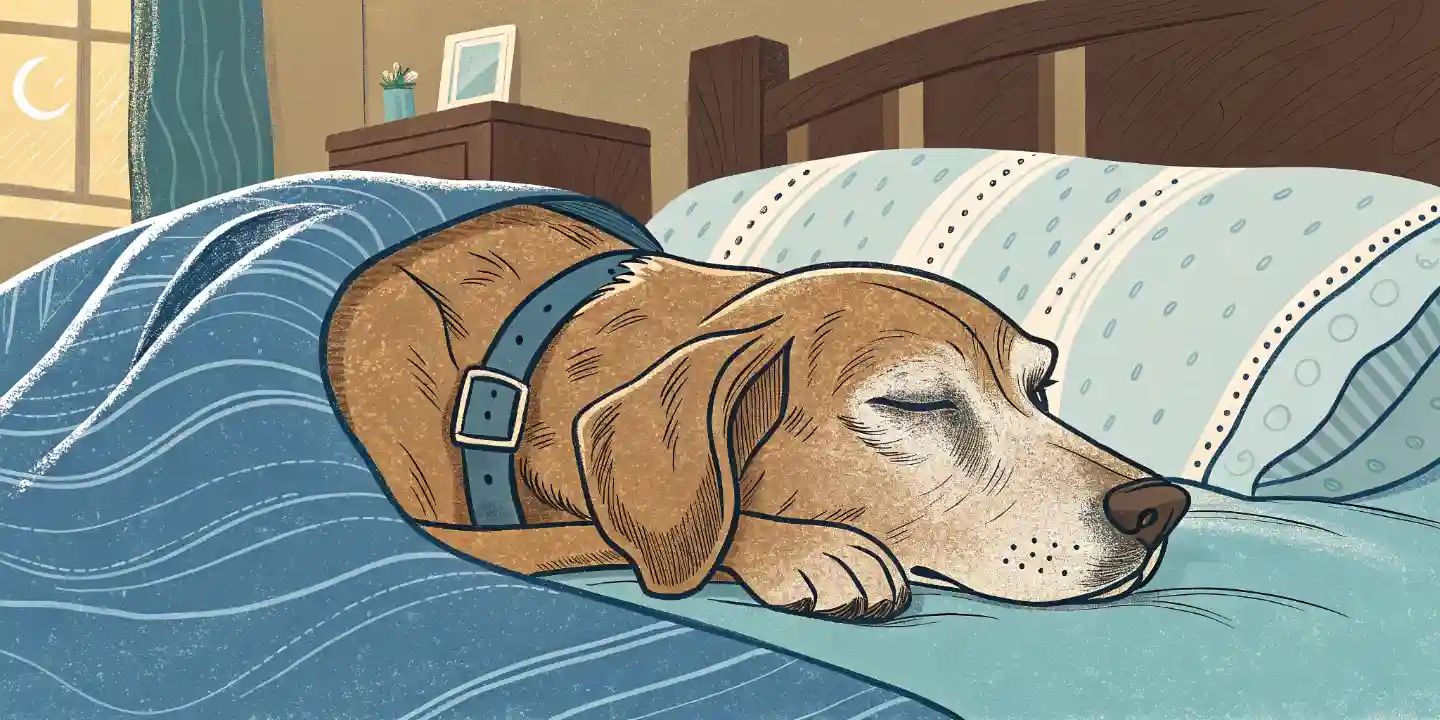
Senior Dog Comfort: Home Safety Guide
Is your senior dog struggling at home? Our guide covers ramps, beds & more for ultimate comfort & safety. Read now! #seniordog #dogcare
Adapting Your Home for a Senior Dog: Ramps, Orthopedic Beds, and Non-Slip Surfaces
As our canine companions enter their golden years, their needs change. Suddenly, that once-agile pup who effortlessly leaped onto the sofa might struggle with simple tasks like climbing stairs or getting comfortable on the hard floor. This is where adapting your home becomes essential. It’s not just about making life easier for your senior dog; it’s about improving their quality of life and keeping them happy and comfortable in their twilight years.
Understanding the Challenges Senior Dogs Face
Senior dogs often experience a range of age-related ailments, including arthritis, hip dysplasia, and general muscle weakness. These conditions can significantly impact their mobility and comfort. Even if your dog doesn’t have a diagnosed condition, the simple wear and tear of aging can make navigating a standard home challenging. Think about it – imagine yourself trying to navigate your home with sore joints and reduced vision. Not so fun, right?
In my experience, one of the biggest mistakes owners make is assuming their dog is “just slowing down” when they might actually be in pain. Early intervention is key! Regular vet checkups are crucial to identify and manage any underlying health issues.
Ramps: Making Life Easier One Step at a Time
One of the most significant changes you can make is introducing ramps. Forget the days of your dog struggling to hop into the car or onto their favorite armchair.
Why Ramps Are Essential
Ramps provide a gentle incline, minimizing the strain on joints and muscles. This is especially beneficial for dogs with arthritis or hip dysplasia. Ramps can provide access to:
- The Car: Getting in and out of vehicles can be a major hurdle for senior dogs. A portable car ramp makes travel much more comfortable and safer.
- Furniture: Sofas, beds, and armchairs are often favorite resting spots. A ramp allows your dog to enjoy these comforts without the pain of jumping.
- Stairs: If your home has stairs, consider installing a ramp alongside them or using a series of smaller ramps to break up the ascent.
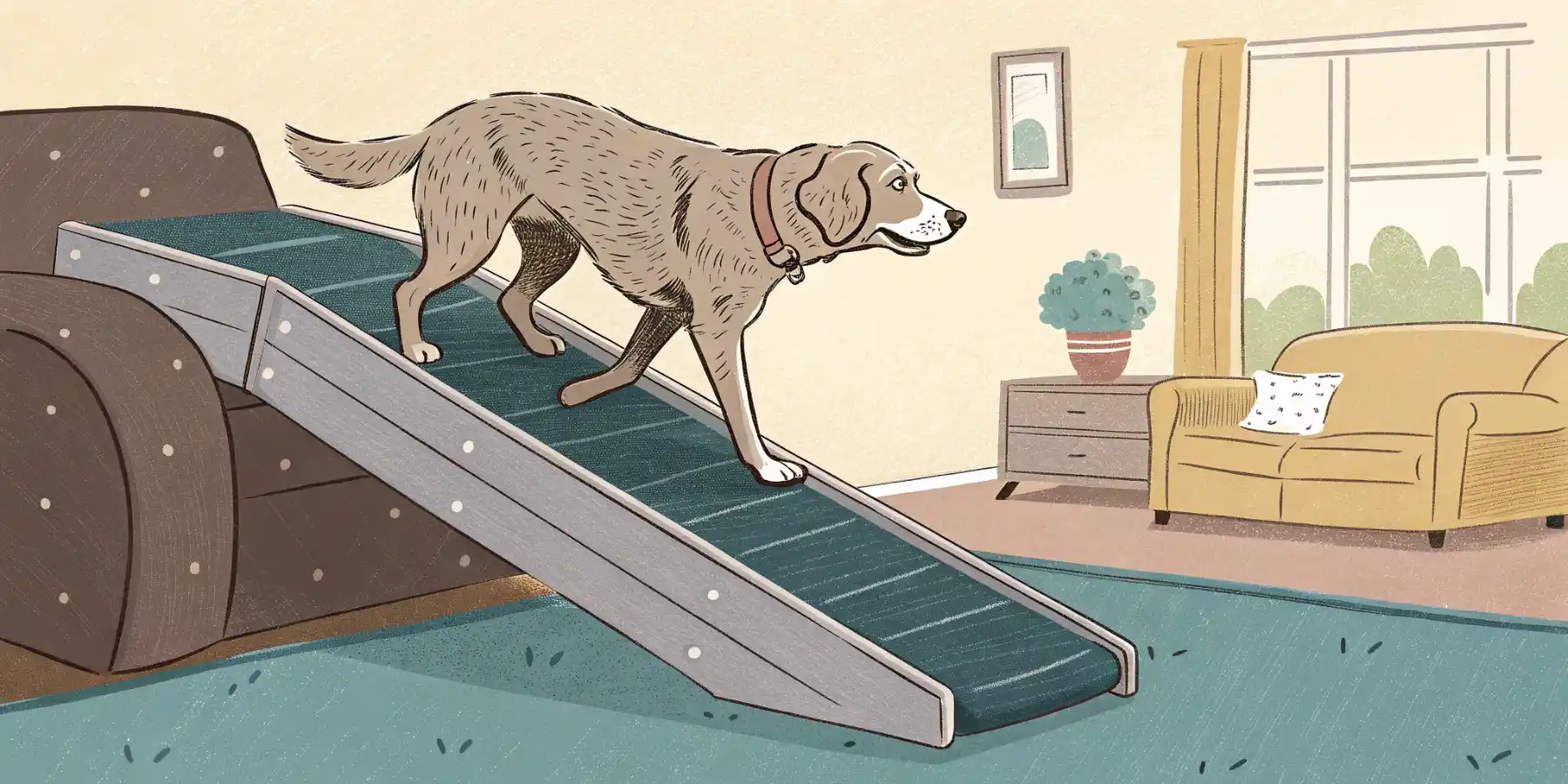 A senior Golden Retriever easily uses a dog ramp to access a comfortable couch, reducing joint strain.
A senior Golden Retriever easily uses a dog ramp to access a comfortable couch, reducing joint strain.
Choosing the Right Ramp
When selecting a ramp, consider the following:
- Length and Incline: The gentler the incline, the easier it will be for your dog to use.
- Weight Capacity: Make sure the ramp can support your dog’s weight.
- Surface: Look for a non-slip surface to provide traction. This is especially important in wet or icy conditions.
- Portability: If you plan to use the ramp in multiple locations, choose a lightweight and foldable model.
Orthopedic Beds: A Haven for Achy Joints
Forget the old, lumpy dog bed. It’s time to invest in an orthopedic bed designed to support your senior dog’s joints and provide maximum comfort. I believe that investing in a high-quality orthopedic bed is one of the best things you can do for your aging companion.
What Makes an Orthopedic Bed Special?
Orthopedic beds are typically made with memory foam or other supportive materials that contour to your dog’s body, relieving pressure points and promoting healthy spinal alignment. This can significantly reduce pain and stiffness, especially for dogs with arthritis.
- Memory Foam: Provides excellent support and conforms to your dog’s body.
- Egg Crate Foam: Offers good support and airflow, helping to keep your dog cool.
- Bolsters: Raised edges provide a sense of security and can serve as a comfortable headrest.
 A senior Labrador Retriever rests comfortably on a supportive orthopedic dog bed in a cozy living room.
A senior Labrador Retriever rests comfortably on a supportive orthopedic dog bed in a cozy living room.
Choosing the Right Orthopedic Bed
- Size: Make sure the bed is large enough for your dog to stretch out comfortably.
- Thickness: A thicker bed provides better support and cushioning.
- Washability: Choose a bed with a removable, washable cover for easy cleaning.
- Water Resistance: A waterproof liner can protect the foam from accidents.
Non-Slip Surfaces: Preventing Slips and Falls
Slippery floors can be a nightmare for senior dogs, especially those with mobility issues. A simple slip can lead to injuries and further reduce their confidence.
Simple Solutions for Slippery Floors
- Area Rugs and Carpets: Place rugs and carpets in high-traffic areas and anywhere your dog tends to walk or stand.
- Paw Wax: Apply paw wax to your dog’s paw pads to improve traction.
- Non-Slip Socks: Dog socks with rubberized bottoms can provide extra grip, especially on hardwood or tile floors.
Imagine this scenario: Your senior dog, Millie, is excited for dinner, but as she rushes to the kitchen, her paws slip on the tile floor. She stumbles, yelping in pain. A simple area rug could have prevented this. Small changes can make a huge difference.
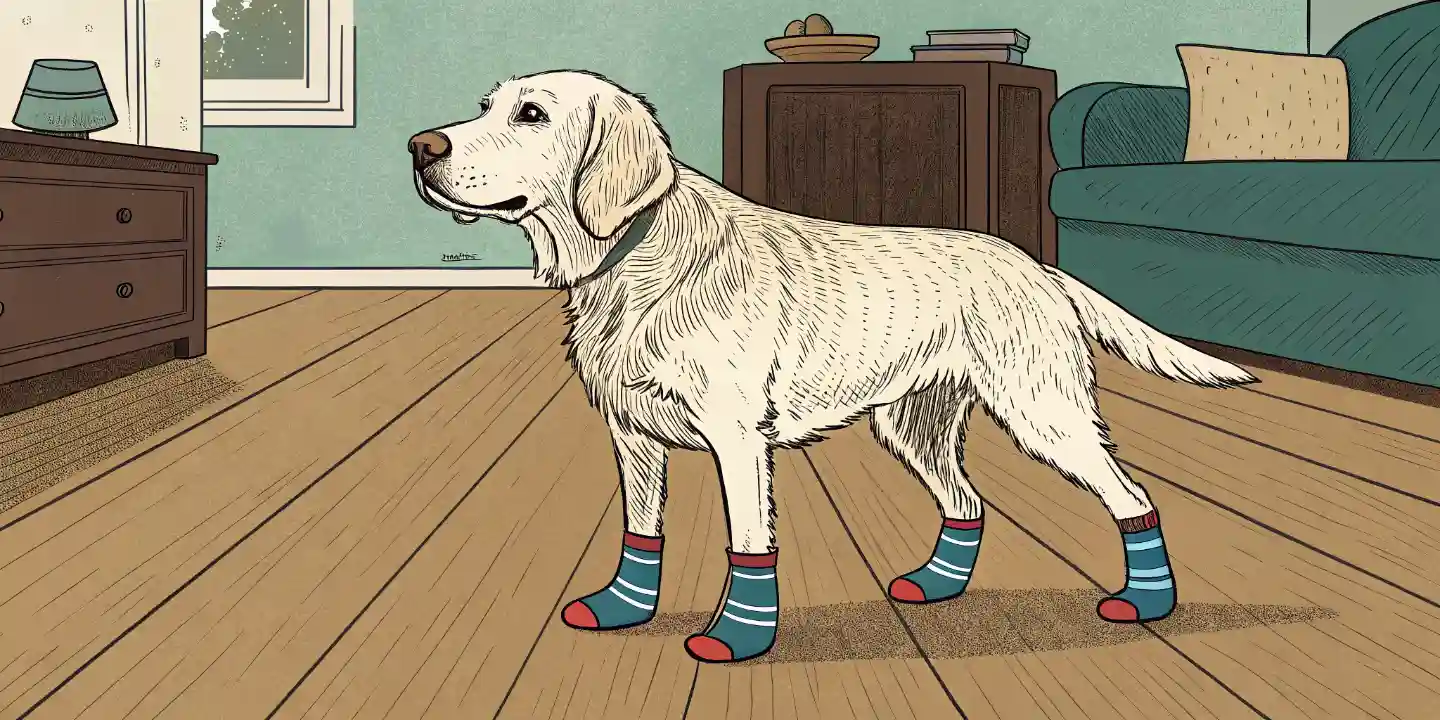 A senior dog wearing non-slip socks walks confidently on a hardwood floor, improving their stability.
A senior dog wearing non-slip socks walks confidently on a hardwood floor, improving their stability.
Long-Term Flooring Solutions
For a more permanent solution, consider replacing slippery flooring with non-slip alternatives, such as:
- Cork Flooring: Provides excellent cushioning and traction.
- Rubber Flooring: Durable and easy to clean, making it ideal for areas prone to accidents.
Other Important Considerations
Beyond ramps, beds, and flooring, here are a few other things to keep in mind when adapting your home for a senior dog:
- Elevated Food and Water Bowls: Can reduce strain on the neck and joints.
- Nightlights: Improve visibility and prevent accidents in the dark. Senior dogs often experience decreased vision, so adding low-level lighting can help them navigate at night.
- Consistent Routine: Senior dogs thrive on routine. Maintain a consistent feeding and walking schedule to minimize stress and anxiety.
- Regular Grooming: Regular brushing and nail trims are important for maintaining your dog’s comfort and hygiene.
- Easy Access to the Outdoors: Make sure your dog has easy access to a safe and secure outdoor area for potty breaks.
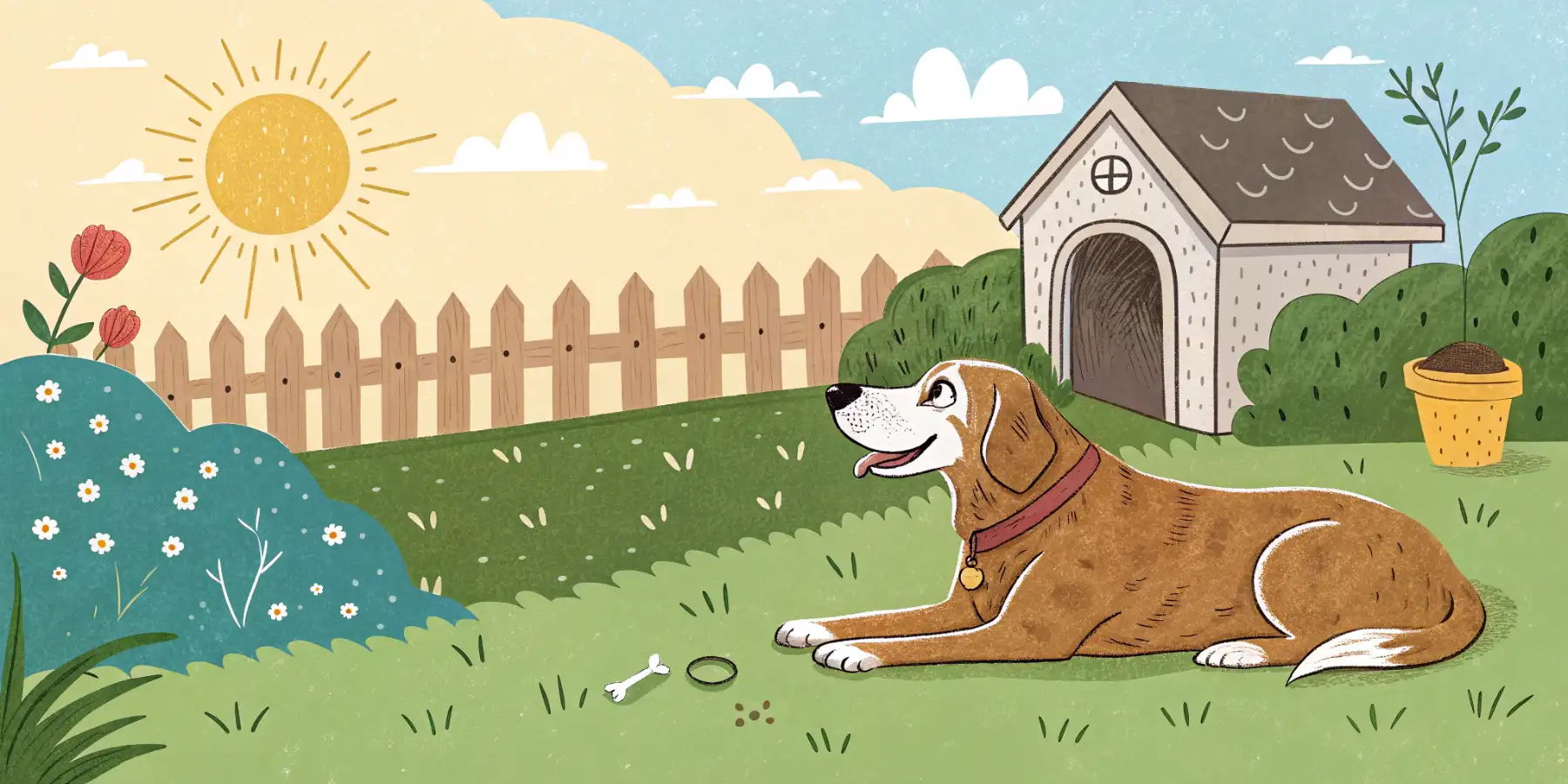 A happy senior dog enjoys the sunshine in a safe, easily accessible backyard adapted for their needs.
A happy senior dog enjoys the sunshine in a safe, easily accessible backyard adapted for their needs.
Adapting your home for a senior dog is an act of love and compassion. By making these changes, you can help your furry friend enjoy their golden years with comfort, dignity, and joy. Remember, it’s not just about making your home more accessible; it’s about creating a safe and loving environment where your senior dog can thrive. It’s about providing the best care for senior dogs with mobility issues.
